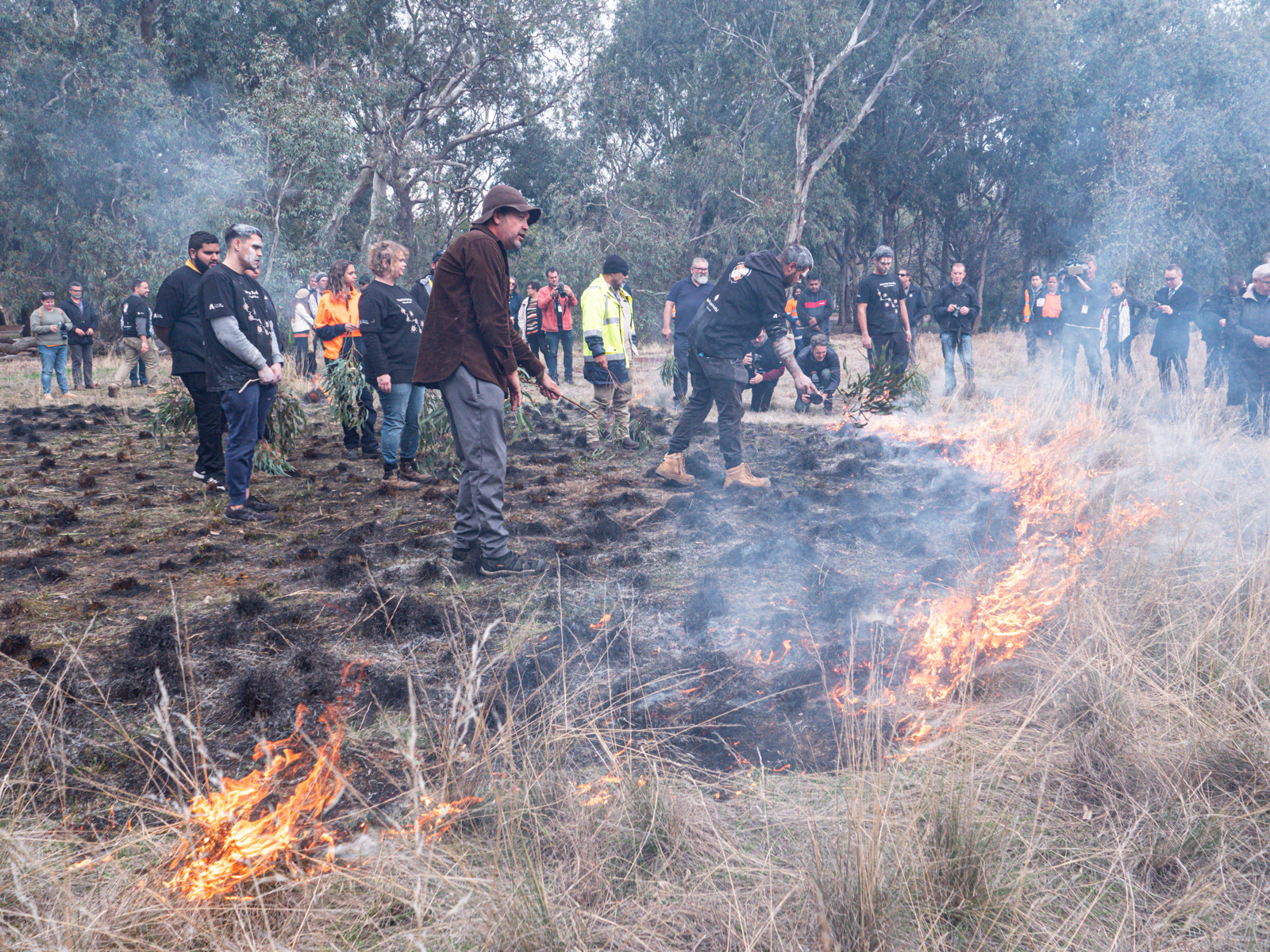Cultural burning is a contemporary term used to describe the long standing First Nations practice of using fire to care for Country. Read on to learn more and find out about some recent burns in SA.

For more than 60,000 years, Australia’s First Nations people have followed cultural practices, including the use of fire to care for their Country (the term ‘Country’ in this context refers to the cultural connection that Aboriginal and Torres Strait Islander people have with the lands of their ancestors).
But, the forced separation of First Nations people from their traditional lands, as well as European colonisation has drastically altered the Australian landscape over the years. This has caused large parts of Australia to not be managed using cultural burning for many generations, resulting in unhealthy environments and increased fuel loads that cause a bushfire risk.
Cultural burning is used in some of regional SA, and there is a growing awareness about its important role in urban areas.

What is cultural burning?
Cultural burning, or its newer term of ‘Aboriginal land management practices’, is used to manage land, plants and animals. Fire is used to expertly control weeds, regenerate plants, mitigate the effects of bushfire, increase food supply and improve access to areas for cultural purposes.
Cultural burning is different to western prescribed burning in that smaller, cooler and slower burning fires are used to manage the landscape. The practice is based on a deep cultural understanding of the landscape and its needs. It’s also about the healing that comes from people reconnecting with their Country.
Local traditional fire practitioners are keeping this ancient, invaluable Aboriginal practice alive in SA. Here’s 2 recent SA cultural burn stories:

1. Australia’s first cultural burn in a capital city
A Kaurna cultural burn was held at Carriageway in Parkin Tuthangga (Park 17) of the Adelaide Park Lands on Friday 14 May 2021.
The burn was a powerful example of healing together. It was the first cultural burn in an Australian capital city and the first on Kaurna Yerta (Country) since European colonisation.
The Kaurna community with the City of Adelaide and Green Adelaide worked together to make this cultural burn a reality. Kaurna are the original people of Adelaide and the Adelaide Plains.
You can read more about it on the City of Adelaide’s website.

2. Narungga and Nukunu reignite restorative practice
Cultural burning returned to Yorke Peninsula and the southern Flinders in May 2022 with Narungga and Nukunu First Nations people reconnecting with the ancient practice.
They joined Firesticks Alliance Indigenous Corporation’s Lead Fire Practitioner Victor Steffensen, who shares his cultural burning knowledge through workshops across Australia.
The 5 burns were supported by the Northern and Yorke Landscape Board, National Parks and Wildlife Service, with funding from WWF-Australia’s Regenerate Australia program.
Read more about it on Northern and Yorke Landscape Board website.

National Reconciliation Week
We all have a role to play when it comes to reconciliation, and in playing our part we collectively build relationships and communities that value Aboriginal and Torres Strait Islander peoples, histories, cultures, and futures.
The dates for National Reconciliation Week are the same each year of 27 May to 3 June. These dates commemorate 2 significant milestones in the reconciliation journey— the successful 1967 referendum, and the High Court Mabo decision.
Our commitment to reconciliation
At Green Adelaide, we are committed to strengthening relationships with the Kaurna Miyurna (Kaurna people) through our partnership with the Warpulai Kumangka (meaning working together) strategic advisory group.
Read more about them on our about webpage.